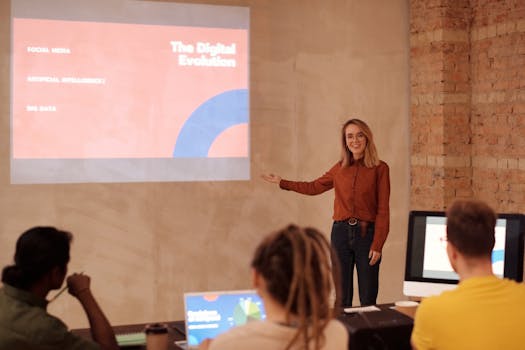
**
From Google to GrowthLoop: How AI is Humanizing My Leadership Style
Leading teams at tech giants like Google, Glean, and GrowthLoop has provided me with a unique perspective on leadership, particularly in the rapidly evolving landscape of artificial intelligence (AI). While some fear AI will replace human interaction in the workplace, my experience shows the opposite. AI, when used strategically, is enhancing my leadership skills and making me a more empathetic, efficient, and ultimately more human leader. This isn't about AI replacing human judgment; it's about AI augmenting it, allowing me to focus on what truly matters: my team.
The Evolution of Leadership in the Age of AI
For years, effective leadership was defined by long hours, tireless micromanagement, and an encyclopedic knowledge of every project detail. However, the rise of AI is shifting this paradigm. We now have tools that can automate tedious tasks, analyze massive datasets for insightful trends, and provide personalized support to team members. This frees up leaders like myself to focus on more strategic, human-centric aspects of the job.
AI: My New Co-Pilot, Not My Replacement
My experience at Google instilled the importance of data-driven decision-making. Now, with AI, that process is exponentially faster and more nuanced. AI tools can analyze employee performance metrics, identify potential burnout risks, and even predict project roadblocks before they materialize. This proactive approach allows for preventative interventions, fostering a healthier, more productive work environment. I'm not relying on gut feeling; I'm using data to make informed decisions that directly benefit my team's well-being and success.
This isn't about blind faith in AI algorithms. My role remains critical in interpreting the data, understanding the context, and making the human judgment calls that algorithms alone can't replicate. AI acts as my co-pilot, guiding me toward better outcomes, but the ultimate control remains in human hands.
Specific Ways AI is Enhancing My Leadership
Here are some concrete examples of how AI tools are transforming my leadership approach:
- Improved Communication & Collaboration: AI-powered communication platforms facilitate seamless collaboration across geographical boundaries. Instant translation, real-time transcription, and smart meeting scheduling tools minimize communication barriers and optimize team workflow. This means less time spent on logistics and more time focused on meaningful discussions and team building.
- Personalized Employee Support: AI-powered tools analyze employee feedback and identify areas needing attention. This allows me to provide more personalized support and coaching, fostering a sense of individual value and belonging within the team. This personalized touch is crucial for employee retention and building a strong team culture.
- Streamlined Performance Management: AI simplifies performance reviews by automating data gathering and providing objective insights into individual and team performance. This data-driven approach helps move beyond subjective opinions and creates a more transparent and equitable evaluation process.
- Enhanced Time Management: Automation of routine tasks, from scheduling meetings to managing emails, frees up significant time. This allows me to dedicate more energy to mentoring team members, fostering innovation, and strategizing for long-term growth. The impact on productivity and work-life balance is substantial.
- Predictive Analytics for Project Management: AI's ability to analyze historical data and predict potential challenges allows for proactive risk mitigation. This prevents project delays and fosters a more predictable and less stressful work environment for the team.
The Human Element Remains Paramount
While AI significantly enhances my leadership, the core tenets of good leadership remain unchanged: empathy, communication, and genuine care for the team. AI tools are merely extensions of these qualities, empowering me to be a more effective and present leader.
For example, even with AI providing performance metrics, I still prioritize regular one-on-one meetings with each team member. These personal interactions allow for open communication, relationship building, and addressing individual concerns that data alone can't capture. The human touch remains irreplaceable.
Addressing Concerns About AI in Leadership
Some may express concern that AI-driven leadership will lead to impersonal interactions and a lack of genuine human connection. However, my experience suggests the opposite. By automating mundane tasks, AI creates space for more meaningful human connections and fosters a more collaborative and supportive work environment. It's not about replacing human interaction but about amplifying it.
The Future of AI-Powered Leadership
The future of leadership is undeniably intertwined with AI. As AI technologies continue to evolve, their role in enhancing leadership will only become more significant. Leaders who embrace AI and learn to integrate it effectively will be better equipped to navigate the challenges of the future and build high-performing, engaged teams. The key is to view AI as a powerful tool that empowers human leaders, not replaces them. The human element – empathy, intuition, and genuine connection – will always be the cornerstone of effective leadership. The use of AI simply allows for a more efficient and data-driven approach to achieve those goals. By strategically integrating AI into my leadership style, I've discovered a path towards becoming a more effective and, surprisingly, more human leader.




















